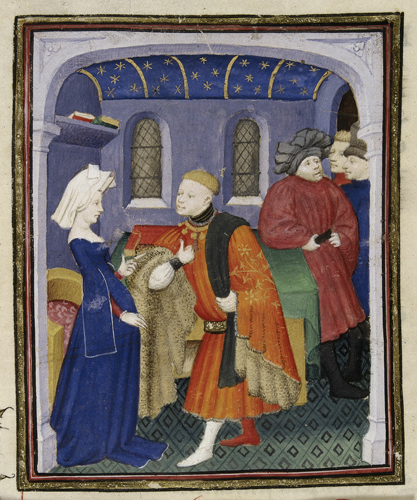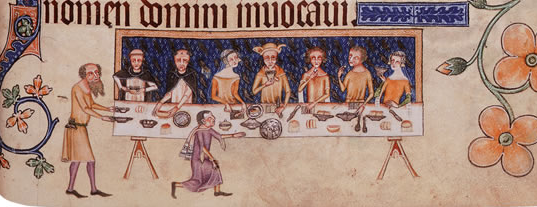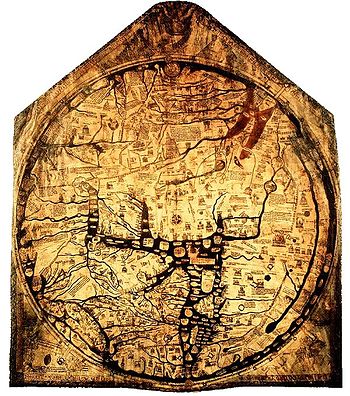
Heart-shaped Book of Hours, BnF, latin 10536, 15th c. Image via this site.
Two of my oldest friends got married this weekend, at a beautiful woodland campsite complete with superhero-themed decorations, crazy dancing, and a campfire with s’mores. And it was particularly fun because they’d thrown out – or subverted – all the traditions that feministy types (or, you know, adults who’ve been responsible for their own lives for years) get irritated by, and this made everything more personal, and very touching. The bride was not ‘given away’ and they tossed a coin to decide who would speak first. The vows echoed the formal language we’re familiar with, but were written entirely by the couple. They’d done the legal bit the day before, so the ceremony just involved their promises to each other.
I loved this, and partly because it made me think about traditions and what it means to reshape a tradition into something new. In fact, this ceremony was, in a way, looking back to even older traditions. In medieval England, it was perfectly legal, and normal, to contract a marriage simply by making the promise to each other, ideally in the presence of witnesses who could be called upon to give public testimony that the event had occurred. It was only much later that weddings become religious ceremonies or required an official celebrant with legal power, and later still that it became customary for a male family member to ‘give away’ his daughter.
You can see how people were adapting traditions in the period I study, in fifteenth century England. What I love about this period is the amazing sense you get that, suddenly, you’ve got access to the thoughts and words of ordinary people making their own decisions about love and marriage. So, I thought I’d share the story of a fifteenth-century woman and her marriage.
The image above is a letter, dictated in 1477 by a woman named Margery Brews, who was writing to the man she hoped to marry, John Paston. Margery and John were engaged to be married, but her father was refusing to provide John with sufficient money to keep his wife, while Margery’s mother was pleading with him to relent.
Despite this very real worry, Margery writes to John in deeply emotional terms, addressing him as her “well-beloved Valentine” – the first recorded use of the term ‘Valentine’ to mean ‘lover’ that we have in English. In medieval England, letter writing could – like marriage vows – be an occasion for formal language, for phrases whose significance was much deeper than the mere words on the page. Yet here, we can see Margery reaching beyond the formal language she must have been taught as young girl, to find a more personal register. In effect, she coined a tradition.

True Love: ‘Le Duc des vrais amants’ with his lady, in London, BL MS Harley 4431, f. 143r. By Christine de Pizan, made for Queen Isabeau of Bavaria, c. 1410-14.
Margery continued to write to John as “well-beloved Valentine,” and later signs herself “your Valentine,” in a letter promising that if John and her father can come to an agreement in their planned meeting, she will be “the merriest maiden on the earth”. Reading Margery’s letters is rather like reading only one half of a conversation, but we can guess at John’s character, not only because he insisted upon marrying Margery despite her lack of money, but also because of what we know of his strong-willed younger sister. Almost a decade before Margery Brews wrote her letters, Margery Paston, John’s nineteen-year-old sister, married her parents’ steward Richard Calle. At the time, John – aged about twenty-five – was both worried and contemptuous at his sister’s unconventional choice, but she stood firm, refusing to renounce the marriage even at the urging of the bishop of Norwich. It seems possible that, when John found himself, like his sister, weighing up the possibility of a marriage for love rather than money, he found himself rather more inspired by his sister’s example.
Both stories have happy endings. Margery Paston and Richard Calle’s marriage endured, producing three sons. Margery Brews proved herself to be a quick-witted person, whose letters to her husband carry a tone of partnership in business when she writes to him “in haste” to inform her husband of his responsibilities to his tenants and her concerns about his business, and ends with news of the good health of “all your babes”.
Margery Brews’ letters began as an intimate record of a one ordinary woman setting out to write something more personal than the formal language traditionally used by engaged couples. Now, though, they’re famous as the ‘first Valentines’. It was lovely to be at a wedding that involved the same re-writing of tradition to make it more personal and more meaningful. I hope people reading this post enjoyed it, and I hope you’ll take a (soppy, yes!) moment to send my friends some good wishes!
Notes
Anyone who has read Cynthia Harnett’s The Wool Pack, with its story of Nicholas and Cecily’s betrothal, might recognise the quotations from Cecily’s letters as being lifted from those of Margery Brews.
If you want to know more about the Paston women, Diane Watt has published a selection of their letters as The Paston Women: Selected Letters, which has lots of helpful notes and is in modernised spelling. You could also try Colin Richmond’s book The Paston Family in the Fifteenth Century, or the first section of Rebecca Krug’s beautifully written book Reading Families (the whole book is well worth reading).









